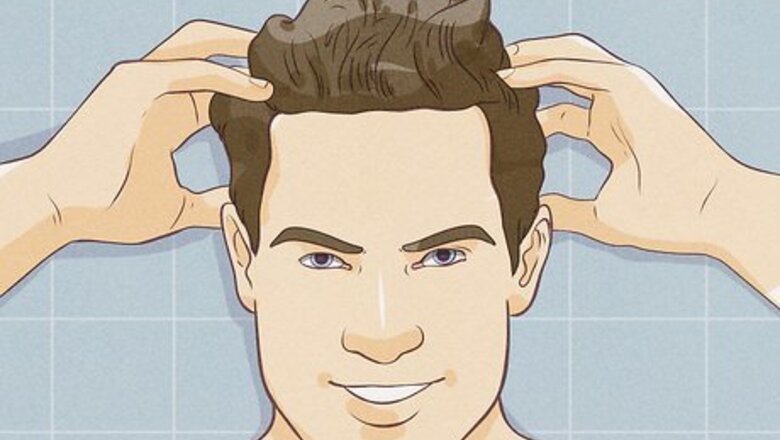
views
- To reverse hair loss, use a hair-growth product like Rogaine.
- Shampoo your hair carefully to avoid damaging your hair, and use conditioner to moisturize and hydrate your hair strands.
- Massage your scalp for 4 to 5 minutes every day to improve blood flow and increase hair growth.
- Eat a healthy diet with plenty of protein, iron, zinc, and vitamins to regrow your hair.
Reversing Hair Loss
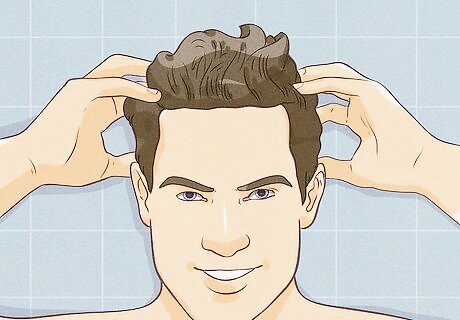
Massage your scalp for 4–5 minutes daily to stimulate hair growth. Scalp massages have been shown to have an effect on slowing down hair loss and stimulating new growth. Take 4 or 5 minutes out of your day and run your fingers through your hair while gently rubbing and pressing down on your scalp. For a stronger effect, use a scalp massager. Run the tines of the massager over your scalp to encourage hair growth. Massaging the scalp increases blood flow to the follicles along your hairline. This, in turn, encourages hair growth and slows down hair loss. Scalp massages are a great tactic to try if you take good care of your hair and scalp but are losing hair due to age or genetics. However, even with the best of care, most people's hairlines are bound to thin some as they age. If you are losing hair in places other than your hairline (such as male pattern balding), you may not be able to re-grow the hair without undergoing medical treatments like hair transplants.

Wash your hair with a gentle shampoo to encourage hair growth. If you’re concerned about some thinning along your hairline, do not wash your hair every day. Shampooing the hair places stress on the hair and follicles and can speed up thinning. You only need to shampoo your hair 2–3 times per week. On other days, give your hair a quick rinse to keep it clean. When you do shampoo your hair, lather it up slowly with gentle movements to avoid tearing out hairs. Rinse the shampoo out using warm to lukewarm water. When you’re buying shampoo, look for a gentle shampoo that clears your pores without the use of harsh chemicals. Herbal shampoos are especially beneficial. Look for ones containing chamomile, aloe vera, ginseng, horsetail, rosemary, biotin, cysteine, proteins, silica, and vitamin E, or make an herbal shampoo yourself. Check the ingredients and make sure that your shampoo does not contain sodium lauryl sulfate. This is a fairly common ingredient in many commercially produced shampoos, but it can cause already weakened hair to further shrink and break. Avoid using scented shampoos, which often contain aggressive chemicals that can harm your hairline.
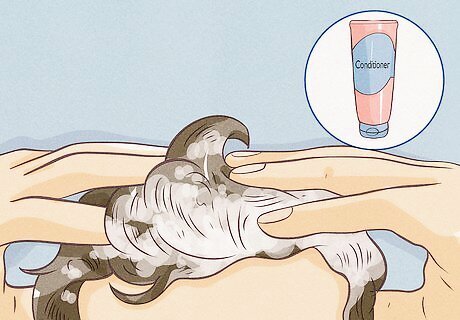
Moisturize your hair by applying conditioner every day. Unlike shampoo, it’s smart to use a conditioner every day, since it replenishes nutrients and healthy oils in your hair. Apply the conditioner immediately after rinsing your hair and leave it in for 2 to 3 minutes before rinsing it out with lukewarm water. Hair that remains properly moisturized will be stronger, thicker, and less likely to break. Herbal conditioners are a great choice because they are less likely to contain potentially hazardous chemicals. A good conditioner is a crucial component in keeping your hair moisturized. Look for conditioners that contain amino acids, biotin, aloe vera, ginseng, or green tea. Hair loss along the hairline has a lot to do with aging and genetics. While caring for your scalp and using commercial products can help, they may not be able to restore your hairline to the way it looked 10 or 20 years ago.
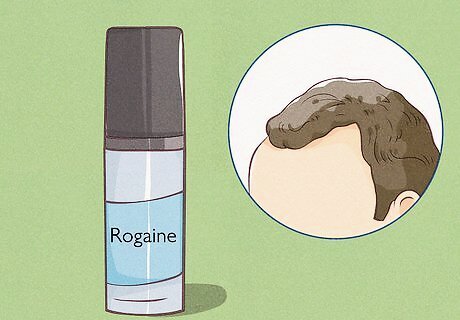
Use Rogaine if your hairline is thinning dramatically. If your hairline is dramatically receding, a hair-growth product like Rogaine may be your best bet. Rogaine contains the drug Minoxidil, which works by enlarging your hair follicles and prompting hair to grow longer. Massage the medicated gel into your scalp just above your temples. Also rub it along the top of your forehead to encourage hair regrowth along your hairline. Continue using Rogaine once each day for 6 months in order to see results.Tip: In addition to Rogaine, there are a handful of other commercial products that work to fill out a thinning hairline. Finasteride (Propecia) is an oral tablet commonly used by men to slow down hair loss. While they’re not used as frequently, oral medications like dutasteride (for men) or spironolactone (for women) can help slow down hair loss as well. Talk to your doctor before using Rogaine if you’re on any prescription medications.
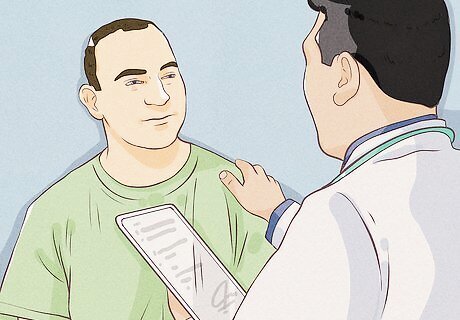
Talk with your doctor if your hairline continues to recede. If your efforts don't produce results after a couple of months, schedule an appointment with your dermatologist or general practitioner. The doctor will tell you if it is possible to regrow your hairline at all. If it is, they might be willing to prescribe regrowth medication or otherwise recommend transplants or a special regrowth procedure. They’ll also ask about a history of hair loss and other medical conditions in your family. There are a few different medical treatments for hair loss you could try, like corticosteroids, laser therapy, or platelet-rich plasma (PRP). A doctor will also be able to help you figure out whether you’re losing hair due to age and genes, or if it’s related to poor hair-care practices. Your general practitioner may refer you to a dermatologist, since this branch of medicine deals directly with hair and skin conditions.
Limiting Further Hair Loss
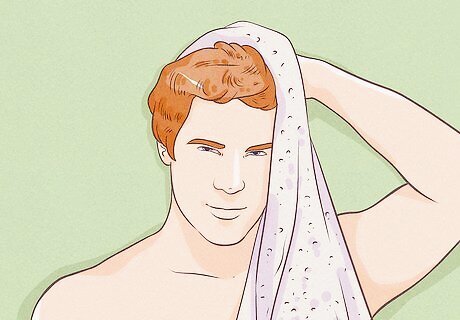
Dry your hair gently and slowly after you take a shower or bath. After washing and rinsing your hair, allow it to air dry or dry it gently with a towel. If you dry your hair with fast, aggressive rubbing movements, you’ll risk pulling out hairs by their roots. Instead, gently pat it dry to keep the hairs firmly anchored in your scalp. Do not rub your hair dry or wring out excess moisture. This can create additional stress on the remaining hairs of your scalp.
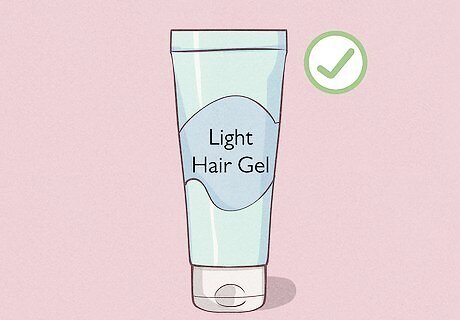
Limit your use of chemical dyes and styling products. Chemical relaxers and dyes can damage hair and make thinning or hair loss even worse. The same goes for heavy hair gels and styling products which have a tendency to uproot hairs from the follicles along a thinning hairline. If you must style your hair, try using a light hair gel or a spray-on hair wax rather than a heavy mousse. The negative effect that potent chemicals have might seem obvious enough, but you should even restrict your use of milder chemical products. For instance, most commercial hair gels contain alcohol. Alcohol removes moisture from your hair, making it more brittle and likely to break off as a result.

Use heatless methods to style your hair. Hairdryers, curling irons, and straighteners can really damage your hair. Using these tools can also put pressure on the roots of your hair, and both issues can lead to further breakage and hair loss. Try no-heat styles to keep your hair healthy. You’re more likely to have healthy hair if you don't use heat treatments. Be aware, though, that if you're losing your hair due to genetics or to aging, avoiding heat while styling your hair may not be enough to save your hairline. If you must use heat to dry or style your hair, be mindful of the temperature of the products you use. People tend to turn the heat up to the maximum temperature, when most people only need them to be about 280 °F (138 °C)-325 °F (163 °C).
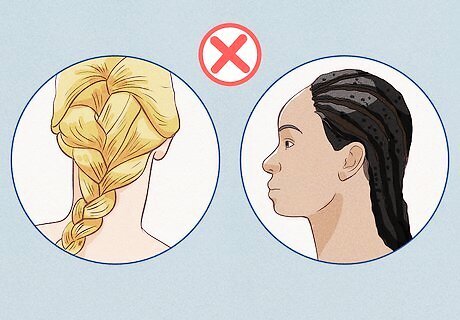
Avoid hairstyles that put constant pressure on your hair. Hairstyles like braids, cornrows, weaves, tight buns, and even simple ponytails can put stress on your hairline. This can lead to your hairline thinning much faster than it normally would. If you have long hair, keep your hair down for the majority of the day to reduce the amount of stress placed on your follicles.Tip: If you do need to tie your hair back for some reason, there are ways to minimize the stress. Keep any ponytail, bun, or braid as loose as possible. Similarly, ponytails and buns tied below the height of your ears put less tension on your roots than high styles do. When your hair is tied back, strands of hair can break off at the root, causing hair loss around your temples, bangs, sideburns, and forehead.
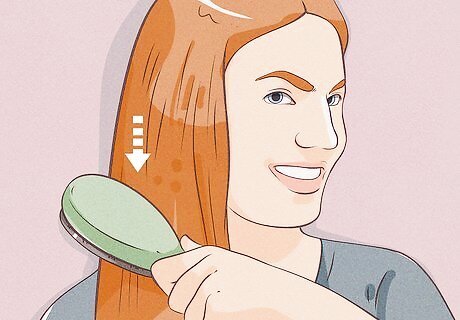
Brush your hair slowly and gently to prevent breakage and hair loss. Brushing and combing your hair can put stress on your hairline. If you don’t need to brush your hair every day, try only brushing it 2–3 times a week with a wide-toothed comb. When you do need to brush your hair, do so as gently as possible to avoid breaking off any strands at the root. Be especially cautious when brushing your edges. Stop using a heavy brush along the hairline and opt for a soft bristle brush instead. For severely damaged hairlines, consider brushing with a toothbrush instead of an actual hairbrush.
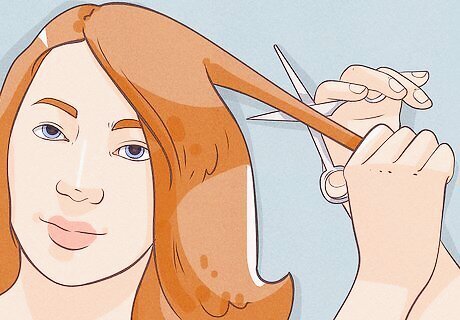
Cut your hair short to keep its weight from stressing your hairline. The sheer weight of having hair that’s longer than 8–10 inches (20–25 cm) can cause hair loss. Long hair is heavy, and it can sometimes pull the root of hairs along your hairline out of their follicles. Cutting your hair so that it’s shorter than 3–4 inches (7.6–10.2 cm) reduces the amount of weight placed on each hair and can slow down or stop hair loss. In fact, if you don't mind shaving your hair completely, doing so might be the best long-term option for restoring your hairline.
Lifestyle and Dietary Changes
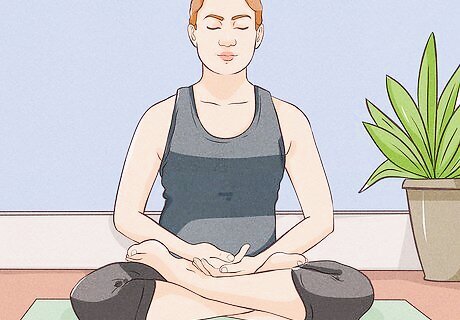
Reduce daily stress to stop ongoing hair loss. When individuals go through high-stress experiences or have stressful lives in general, they’re likely to experience related hair loss. If your hairline is already fading, cutting back on stress can encourage the hair to grow back. If you experience a stressful period, you’ll notice a loss in the hair around your hairline 3–4 months later. To remove common stressors from your life, try: Listening to calming music or taking a bath Challenging negative thoughts Spending time in the outdoors Practicing yoga or meditating

Eat foods with omega-3 fatty acids to strengthen your hairline. Omega-3 clings to the hair shaft and cell membranes in the scalp, where it strengthens your hair follicles and encourages growth. It also makes your hair less brittle, so strands around your hairline will be less likely to break off as they grow back. Adults need at least 200 mg of omega-3 acids daily, but you shouldn’t take more than 500 mg.Note: Good sources of omega-3 include fatty fish like salmon and tuna, flaxseeds, walnuts, kale, and Brussels sprouts. Nutritional supplements that contain these helpful nutrients can also make a difference, but in most cases, your hairline will get greater benefit from direct food sources than it will from artificial supplement sources.
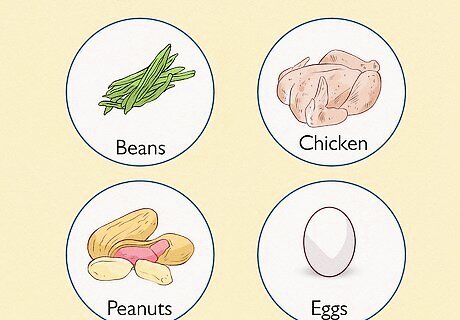
Incorporate protein into all of your daily meals to stimulate growth. Hair is almost entirely made of protein, so if you don't consume enough protein, you'll never be able to regrow your lost hairline. Meat and legumes are some of the greatest sources of protein you can find. Include more chicken, turkey, eggs, peanuts, beans, peas, and lentils in your diet by adding a full serving of protein to your daily meals. Greek yogurt also provides a considerable dose of protein. Healthy adults and teens need 0.36 grams of protein per pound of body weight. For example, if you weigh 150 pounds, get at least 54 grams of protein daily. Protein deficiency can also cause your remaining hair to thin out and turn gray.
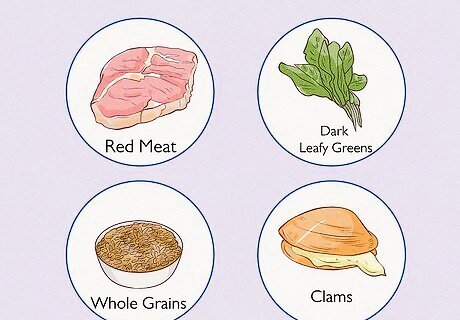
Eat foods full of iron and magnesium to improve the health of your hair. Both of these minerals are crucial to healthy hair growth and can help restore a thinning hairline. Iron improves blood flow around the body. Without it, blood won't be able to carry enough oxygen to the cells around your scalp, and you won't be able to reinvigorate dormant follicles. Magnesium plays a crucial role in many different biochemical bodily functions, including hair growth. Iron can be found in a wide range of foods, including dark leafy greens, whole grains, red meat, oysters, beans, and clams. Try to consume at least between 8–18 mg of iron daily. If you’re looking for magnesium-rich food options, nuts and fish are good sources. Halibut, almonds, and cashews are especially rich in magnesium. Adult men need between 400–420 mg of magnesium daily, while adult women only need 310–320 mg daily.

Incorporate vitamins A and C into your diet to hydrate your hair. Both of these vitamins help your hair follicles produce natural oils called "sebum." This oil keeps your hair hydrated and reduces the risk of breakage. Eat foods that are rich in vitamins A and C, or take daily vitamins. Keep in mind that consuming more than 15,000 IU of vitamin A on a daily basis can actually cause further hair loss, however. A healthy amount of vitamin A for most adults to consume daily is right around 5,000 IU. Sweet potato, carrots, dark leafy greens, squash, and apricots are all high in vitamin A. Adults need between 700–900 micrograms of vitamin A every day. Guava, bell peppers, kiwi, oranges, and grapefruit are all high in vitamin C. Try to consume at least 65–90 mg every day, but avoid taking more than 2,000 mg.
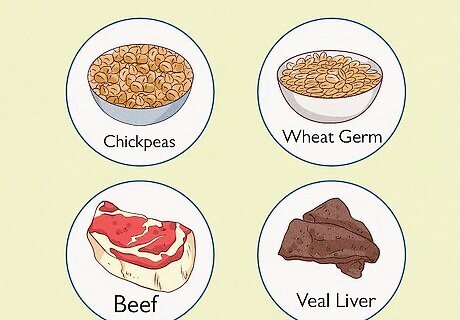
Get at least 11 mg of zinc every day to help repair your hairline. Zinc encourages tissue growth and repair within the body. If your hairline troubles are linked to a damaged scalp, a little extra zinc can make a big difference. Zinc also encourages your glands to produce the oils that keep your hair healthy and vibrant. A few sources worth considering include chickpeas, wheat germ, beef, veal liver, and oysters. Zinc is also commonly found in most daily multi-vitamins.
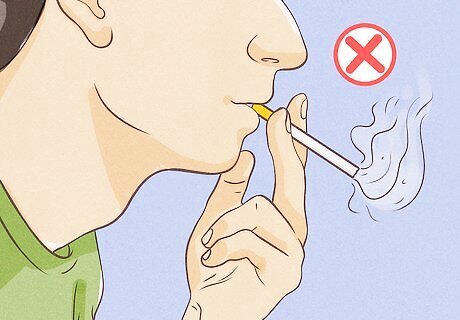
Stop smoking tobacco products to prevent hair loss. In addition to the many other terrible effects that smoking can have on your health, medical studies have shown that cigarette smoking may have a link to hair loss. If you smoke cigarettes, cigars, pipes, or vape, you’re putting yourself at risk to lose hair from your already-thinning hairline. If you’re trying to quit but haven’t been successful so far, find a support group in your area. Smoking introduces toxins into your body. These can damage your follicles and keep them from growing hair.




















Comments
0 comment